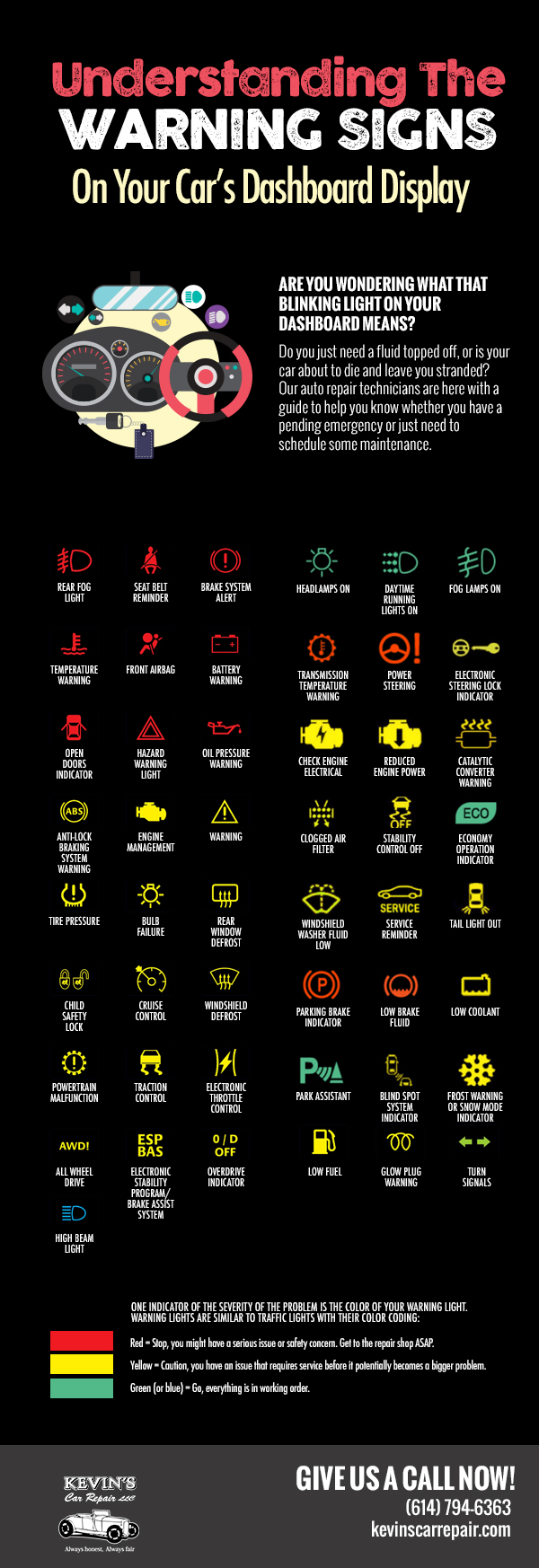Deciphering Your Car'S Caution Indicators: What They Absolutely Signify
Deciphering Your Car'S Caution Indicators: What They Absolutely Signify
Blog Article
Author-Termansen Forbes
When you lag the wheel, those radiant warning lights on your dashboard can be a little bit complicated. Do you know what they're trying to tell you regarding your cars and truck's wellness? Recognizing the value of these lights is vital for your security and the longevity of your car. So, the next time among those lights turns up, wouldn't you wish to understand its message properly and take the needed steps to address it?
Common Warning Lighting and Interpretations
Recognize typical caution lights in your car and comprehend their significances to guarantee risk-free driving.
check it out of the most normal caution lights consist of the check engine light, which signals issues with the engine or emissions system. If this light begins, it's vital to have your automobile examined without delay.
The oil pressure alerting light suggests low oil stress, needing instant interest to stop engine damages.
A blinking battery light could suggest a defective billing system, potentially leaving you stranded otherwise addressed.
The tire stress tracking system (TPMS) light informs you to low tire pressure, affecting vehicle stability and gas performance. Overlooking this might bring about risky driving conditions.
The abdominal muscle light shows a trouble with the anti-lock stopping system, compromising your capability to stop rapidly in emergency situations.
Lastly, the coolant temperature level advising light warns of engine overheating, which can lead to serious damage if not dealt with quickly.
Understanding these common warning lights will aid you address issues immediately and keep safe driving conditions.
Importance of Prompt Focus
Comprehending the typical caution lights in your cars and truck is only the very first step; the importance of quickly attending to these warnings can not be highlighted enough to guarantee your safety and security on the road.
When a warning light brightens on your control panel, it's your vehicle's method of interacting a possible issue that requires interest. Overlooking these warnings can lead to a lot more extreme problems down the road, jeopardizing your safety and security and potentially costing you much more out of commission.
Prompt interest to alerting lights can prevent break downs and mishaps. As an example, a blinking check engine light can indicate a misfire that, if left neglected, can trigger damage to the catalytic converter. Addressing this quickly can conserve you from a pricey repair.
Similarly, a brake system alerting light may signal low brake fluid or worn brake pads, crucial components for your safety and security when driving.
DIY Troubleshooting Tips
If you see a warning light on your dashboard, there are a couple of do it yourself troubleshooting suggestions you can try before looking for expert aid.
The initial step is to consult your vehicle's handbook to understand what the specific warning light indicates. Sometimes https://brake-repair-near-me62739.blogginaway.com/32709237/just-how-to-select-the-right-automobile-explaining-service-for-your-requirements can be as easy as a loosened gas cap activating the check engine light. Tightening the gas cap may solve the trouble.
An additional typical concern is a reduced battery, which can cause various advising lights. Inspecting the battery connections for rust and guaranteeing they're safe and secure could take care of the problem.
If a warning light continues, you can attempt resetting it by separating the car's battery for a couple of minutes and after that reconnecting it. Additionally, checking your vehicle's liquid degrees, such as oil, coolant, and brake liquid, can assist repair warning lights associated with these systems.
try this web-site
To conclude, understanding your auto's warning lights is vital for keeping your car running smoothly and securely. By immediately addressing these alerts and knowing what they imply, you can avoid expensive fixings and potential breakdowns.
Keep in mind to consult your car's guidebook for specific details on each cautioning light and take action accordingly to make certain a hassle-free driving experience.
Remain educated, remain risk-free when driving!
